I am new to my current job and one design inherited from my predecessor was as follows. I am wondering if this is the best practice to make a symmetrical circuit. 
I was told that the two wires (R+ and R-) should keep the same length to make a symmetrical circuit. To do that, the designer put some turns on the layout. It looks weird to me, but wondering if this is a common practice. The frequency in the circuit is up to 1.5GHz.